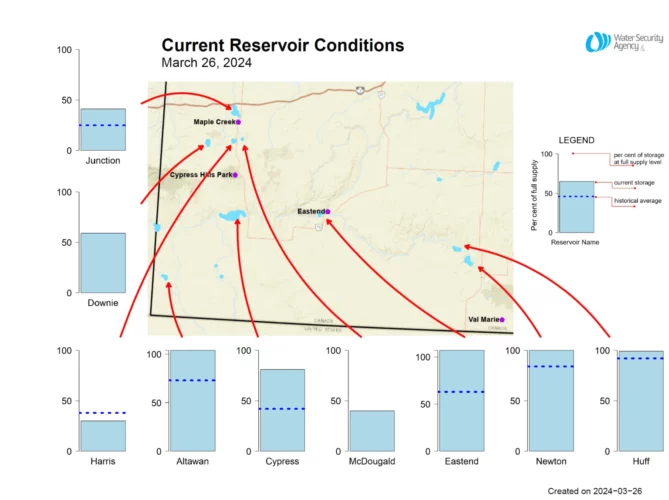The Water Security Agency (WSA) has provided an update on the status of Saskatchewan’s reservoirs.
Overall, 33 out of 45 major reservoirs – nearly three quarters – are near full or are expected to fill, while another six reservoirs are between 70 to 90 per cent full and still filling. The remaining six reservoirs will likely not fill, most of these are in southwestern Saskatchewan.
Over the winter WSA implemented a conservative operating plan at Lake Diefenbaker to retain and store water ahead of possible dry conditions this spring.
Saskatchewan’s largest reservoir, Lake Diefenbaker, supplies over 60 per cent of the province’s water supply needs. Levels were brought up earlier than normal to maximize supply. Other major reservoirs are currently at or near full as a result of good water management practices and sound decision making.
At the beginning of April, Lake Diefenbaker is over one metre higher than it was at this time last year, and over 1.5 metres higher than the same time in 2022.
Over the winter, snowpack conditions ranged from below normal to well-below normal. While runoff conditions can change during late winter and spring, WSA will continue to monitor moisture and forecasted weather patterns and adjust operating plans accordingly.
Ensuring Saskatchewan’s water resources are sustainable, adaptable and reliable are WSA’s top priority, and WSA will keep working with communities, producers and stakeholders to manage our water resources for the benefit of all Saskatchewan people.
 s
s









